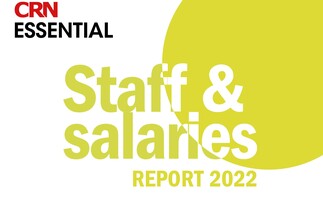With artificial intelligence being talked about now more than ever, Tom Wright spoke to some of the channel's early AI entrants to see if the technology is mature enough to solve customer problems, and make money
Artificial intelligence (AI) has undoubtedly been the buzz phrase of 2018. Along with machine learning, the two technologies have been billed as game changers, with the ability to change just about every industry in the world.
Multiple analysts and tech firms have published reports on AI's potential and the amount of money expected to be spent on it over the coming years - most recently Deloitte, which claims nine in 10 UK companies will have invested in AI by 2020, with over half investing more than £10m.
But behind the hype, examples of AI in action - in the public domain at least - are few and far between. The lack of tangible use cases presents a number of questions. Is AI ripe for opportunities, and can the channel actually make money out of it at this stage? With this in mind, CRN set out to find solid examples of channel organisations delving into AI to successfully solve genuine customer problems.
Watching your health
Next year will see the launch of the WellWatch, a smartwatch launched from a partnership between a UK health provider and Microsoft partner RedPixie. The device gathers data such as heart rate and blood pressure in real time and sends it back to a programme created by RedPixie. This platform then uses AI to assess the wearer's health and decide if any action needs to be taken.
If, for example, the wearer has had a sudden deterioration in heart rate, the system will send out a notification to the healthcare provider.
The GPS means that the wearer can be located instantly. Essentially, the technology enables emergency responders to arrive at the wearer's location with an idea of what has taken place without even having to speak to them.
"This is a true game changer," said RedPixie's chief digital officer Mitchell Feldman (pictured). "It will radically change the way that healthcare is delivered globally.
"The whole thing is designed to be ready to take on population scale overnight, so tomorrow I could take on the whole planet. Because it's on the cloud it's designed to be elastic, so I can ingest millions of events a day. That is
the beauty of IoT, machine learning and the cloud."
The process takes around 90 seconds to go from the incident taking place to the notification being sent to the relevant parties. But aside from notifying users of one-off events, the AI in the system will churn through the petabytes of data it receives from the devices and learn from what it analyses, meaning that it can begin to predict when a serious health incident is going to take place based on past events.
"We've never been able to model all of this data and understand when something is going to happen," Feldman added. "No one has ever aggregated all the data sets."
The device is not just designed for serious medical episodes. For example, it can alert family members if someone with dementia has strayed unusually far from their home or has been out longer than usual, or if someone has taken the watch off. It can also send alerts if someone has suffered a fall and alert the relevant people based on the severity of the incident.
Stop wasting money
Moving away from AI on Microsoft's cloud, Cambridge-based Arcus Global has built its platform using Amazon Web Services (AWS) and Amazon's Alexa AI.
Alexa, the so-called personal assistant on the Amazon Echo speaker is often viewed as a gimmick, but Arcus has built its own platform on Amazon's foundational tech to help solve budgetary problems for a local government organisation.
Cost restraints in the public sector are well documented, so Arcus has used Alexa to create a solution specifically for Aylesbury Vale District Council (AVDC).
The solution enables customers to interact with their Echo device to carry out tasks that would usually require speaking to someone at the council, for example finding out information about council tax and booking waste collections.
The Alexa interface uses AI to engage with the end user and establish which task they want to carry out, before interacting with a back-end system built by Arcus which decides what to do with the information. If the customer wants to book a waste collection, for example, the system will interact with Salesforce in order to book
the appointment.
The ultimate aim is for the system to take on all the mundane tasks in the council, leaving its staff to focus
on more complex work.
"The customer service centre will still check it at the moment to make sure that we've got it right, but for the first couple of transactions we have managed to have a complete voice interface without the need for human intervention," said Arcus founder Lars Malmqvist.
"That becomes interesting as you start to scale up. It means that all the routine stuff where you can design a good conversation interface becomes almost 100 per cent automatable in terms of how you deal with the transaction.
"So far there have been between 200 and 300 users of those two transactions in Aylesbury which, given the amount of people owning an Echo, is not too bad. Probably 20 or 30 per cent of the people with an Echo in Aylebury have used it."
Arcus is now working on building out capabilities for around a dozen other queries for AVDC. Malmqvist said that usage of the services will only increase as the number of people with Amazon Echo devices goes up.
Student struggles
Staying in the public sector, Solutionpath has built a platform that uses AI to allow universities to track the progress of their students. The firm was founded by managing director Howard Hall and is part of the DTP Group, which houses HP reseller DTP.
The Solutionpath software has the ability to predict if a student is about to drop out of university before they actually leave. The solution works by analysing data from a student's activity at university - grades, attendance, and so on - and comparing it with students from previous years. If the data tallies with a student from a previous year who, for example, dropped out before completing the course, it can flag this to the relevant people.
"We typically see disengagement about six to 20 weeks before a student actually leaves university," Hall (pictured) said. "It gives the university a lot of foresight to see what the problem is and to remediate that.
"It might take time between a student being seen to be having challenges to when they can be seen by a councillor, so what the AI component allows us to do is fast-track that by having a quick engagement through some prescriptive analytics. It's a gap filler where it's engaging with the student."
Once the machine learning on the back end of the system has identified students at risk, it will notify university staff, while an AI interface will engage with the student and offer support ahead of a meeting.
Hall said the Solutionpath software is currently being used by 10 universities in the UK and one in Australia.
"We build patterns of engagement against a known outcome," Hall explained.
"A known outcome would be if a student is leaving, for example. We look at what the digital pattern is of a student leaving - so what happened in week one, week two, etc - and then all we're doing is overlaying the current cohort to look for matches.
"If you think of the tutoring structure, without the insight all they can do is give students the one-size-fits-all support. Whether they're on course for a first-class honours degree or a fail,
in reality what they get is the same.
"In reality what they want to do is get the students who are below the line, because
they want to nudge them up."
Do it yourself
Notably, all three of these use cases involve a partner using software built by vendors, but also, in a diversion from traditional channel habits, developing their own intellectual property (IP).
RedPixie's Feldman said that building IP will become more and more important for channel firms, as the big cloud players begin to rely less on partners and more on direct sales for their own products.
"All the cloud providers are eventually going to go direct to the consumer and for the very easy workloads they'll offer those services from free, or offer tooling," he said. "We're seeing that already."
"Building our own IP means that our business is highly sustainable and repeatable. We've built this quality, repeatable pattern that we can apply to different industries and create a revenue stream for ourselves.
"We have a desire to make our business have less reliance on the traditional work and more reliance on IP, because it's much more sustainable."
Solutionpath's Hall said he expects IP to become more important from a technological standpoint, as more functionality becomes available and solutions become more complex.
He said the channel's unwillingness to innovate could become a problem, with younger start-ups having the potential to swoop in where older companies are reluctant to change.
"You need a bit of joined-up thinking," he said. "We didn't know anything about software developing five years ago, but we've built a business around solving customer problems.
"The traditional approach for our industry is to either buy or sell a platform, and leave them to get on with it. Our approach [at Solutionpath] has been to find the problem we're going to solve and then build the platform to solve the problem.
"What may well get in the way of adoption by the current channel is that inability to innovate and think about things a little bit differently, but I don't think it
will hold things up because others will just come around the sides."
Show me the money
Questions have often been asked of AI's profitability, and whether the investment in necessary capabilities would be justified by a sufficient return.
These three case studies in particular all involve the channel partner investing in software development, therefore adding numerous team members and resources they previously wouldn't have needed if they were reselling products and providing services.
Feldman said that projects of this nature have been made financially viable by the cloud providing the necessary infrastructure, allowing the likes of RedPixie to focus on the software development.
"This is a classic use case for the cloud," he said. "Historically if I wanted to build this solution I would have had to make millions of pounds worth of investment to even have the platform from day one. Today I don't need to do that.
"All my investment is in building the solution and the logic, rather than on the hardware. Tomorrow, once it's built, my expenses drop down because I've invested in building it. My only cost then is the consumption of cloud, which is in alignment with the number of people who consume it."
Arcus' Malmqvist echoed the sentiment, adding that, while developing software with AI requires expertise, channel firms may be surprised at how much can be achieved with a relatively small team.
"The opportunity is there but there are not that many who are applying it," he said.
"I think we're at the point where proof of concept is there, but people haven't really caught on to the business opportunity yet and started making serious efforts.
"[Our work] has been done by a very small project
team. It has required resources to do, but it has not required a large team for a long period of time, so if you have a few senior engineers and you can spare them for a few months, you can probably get something up and running."












